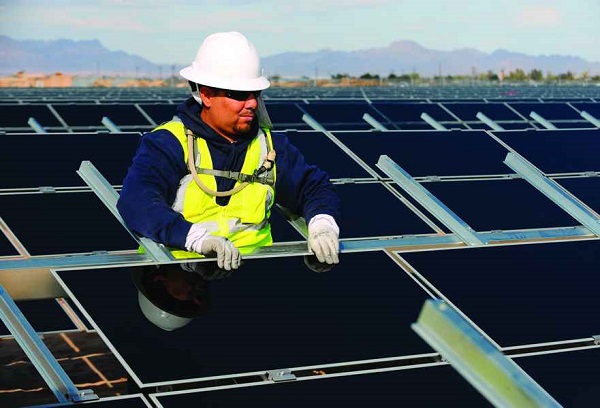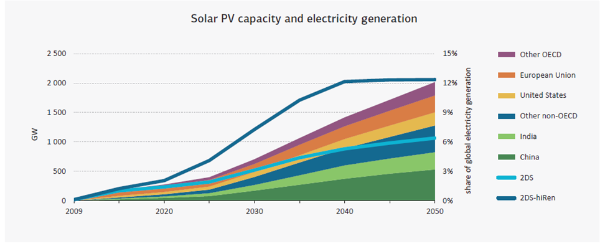Solar PV is a commercially available and reliable technology with a significant potential for long-term growth in nearly all world regions. Analytic reports estimate that by 2050, PV will provide around 11% of global electricity production and avoid 2.3 gigatonnes (Gt) of CO2 emissions per year.
Achieving this will require an effective, long-term and balanced policy effort to allow for optimal technology progress, cost reduction and ramp-up of industrial manufacturing for mass deployment. Governments will need to provide long-term targets and supporting policies to build confidence for investments in manufacturing capacity and deployment of PV systems.
PV is expected to achieve grid parity – i.e. competitiveness with electricity grid retail prices – by 2020 in many regions. As grid parity is achieved, the policy framework should evolve towards fostering self-sustained markets, with the progressive phase-out of economic incentives, but maintaining grid access guarantees and sustained R&D support.
As PV matures into a mainstream technology, grid integration and management and energy storage become key issues. The PV industry, grid operators and utilities have to develop new technologies and strategies to integrate large amounts of PV into flexible, efficient and smart grids.
It is recommended that governments and industry increase R&D efforts to reduce costs and ensure PV readiness for rapid deployment, while also supporting longer-term technology innovations. There is also the need to expand international collaboration in PV research, development, capacity building and financing to accelerate learning and avoid duplicating efforts.
Emerging major economies are already investing substantially in PV research, development and deployment; however, more needs to be done to foster rural electrification and capacity building. Multilateral and bilateral aid organisations should expand efforts to express the value of PV energy in low-carbon economic development.
Again, for PV to achieve this potential, appropriate financing schemes need to be developed and implemented, in particular for rural electrification and other applications in developing countries. Plus R&D efforts need to be increases in order to reduce costs and ensure PV readiness for rapid deployment, while also supporting longer-term innovations.
Although solar PV is promising for the future of maintaining a sustainable energy source, the environmental impacts associated with it can include land use and habitat loss, water use, and the use of hazardous materials in manufacturing–though the types of impacts vary greatly depending on the scale of the system and the technology used.
Reference:
1) Story: IEA sees great potential for solar, providing up to a quarter of world electricity by 2050 — International Energy Agency
2) Publication: Technology Roadmap: Solar Photovoltaic Energy














Comments